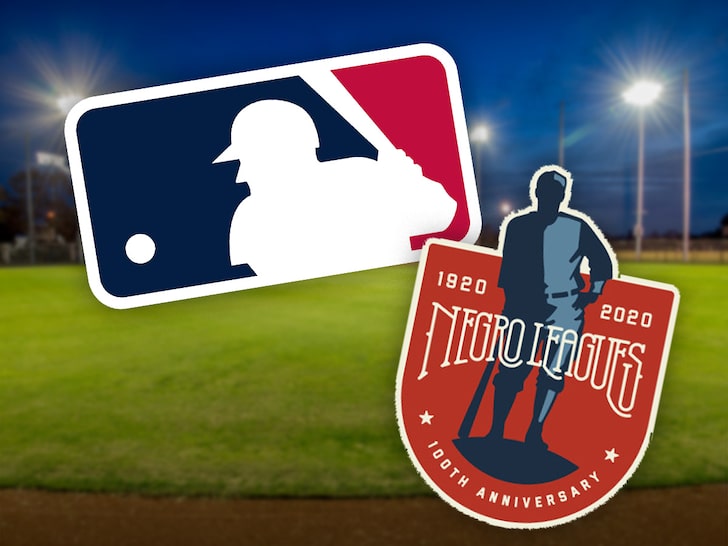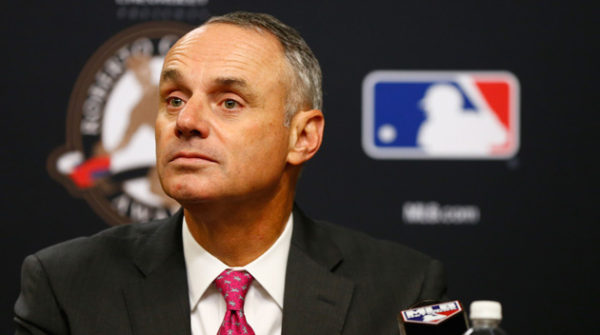Major League Baseball finally recognizes the Negro Leagues

Credit: TMZ

On December 16th, Major League Baseball commissioner Rob Manfred announced that the Negro Leagues would finally receive validation.
Of course, that validation does not wipe out the stain of decades of exclusion of Black players, but the decision does acknowledge the talented men who could have graced the grand old game given the opportunity.
Thanks to the decision, Negro League records and statistics will be added to the MLB official records. In 1968, MLB had the opportunity to set the records straight when the commissioner William Eckert convened a Special Record Committee. Tasked with determining which professional leagues should be considered when combing through copious records, the Negro Leagues didn’t even enter the equation. Recently MLB made special note of the omission and the need to correct the egregious error.
Padres outfielder Tommy Pham thanked the league for its contributions to the players who loved the game but were prevented from taking the field in major league ballparks across the country.
Now MLB faces the daunting task of sorting through the records and quantifying statistics that don’t necessarily jibe with those kept by MLB. For instance, players in the Negro Leagues played fewer games and thus had fewer plate appearances; a measure MLB uses to determine leaders in batting average. MLB currently requires 5,000 plate appearances to make that determination, which unfairly penalizes Negro League players. In fact, if 4,000 plate appearances became the litmus test, even Babe Ruth would move down the leaderboard.
Seven leagues total will be considered when quantifying performance:
The Negro National League (1920-31)
The Eastern Colored League (1923-28)
The American Negro League (1929)
The East-West League (1932)
The Negro Southern League (1932)
The Negro National League (1933-48)
The Negro American League (1937-48)
The Kansas City Monarchs of the early Negro National and American Leagues lasted the longest of any of the Negro League teams. Baseball greats like Satchel Page, Buck O’Neil, and James “Cool Papa” Bell played for the Monarchs, as did future Hall-of-Famers Jackie Robinson and Ernie Banks. Robinson broke down the color bar in 1947 with the Dodgers, and O’Neil also made news as the first Black coach in MLB. The Monarchs didn’t completely fold until the 1960s.
Black baseball can actually be traced back to the end of the Civil War in 1865. The first professional Black players date back to the 1870s, during the same time frame, white men took up the game. A group of women created their own league at Vassar College in 1867.
MLB’s recent decision will add more than 3,000 players and their achievements to the record book that had excluded Black players until the Los Angeles Dodgers leaped by signing Jackie Roosevelt Robinson in 1947. Dodger general manager Branch Rickey chose Robinson after determining that he could withstand the inevitable racism, indignities, and Jim Crow laws he would face by breaking the color barrier. Despite the odds, Robinson earned the Rookie of the Year award and, in 1962, became the first Black player inducted into the Hall of Fame.
Other teams followed the Dodgers’ lead. Larry Doby, Hank Thompson, Willard Brown, and Dan Bankhead also debuted in the major leagues in 1947, with Roy Campanella, Satchel Paige following the next year. By 1981, Black players made up 18.7 percent of all major leaguers, and the numbers rose to 19 percent in 1995. However, on opening day this year, the numbers had fallen to 7.5 percent. One solitary black man, Mookie Betts, played in the World Series in 2020.
Recognizing the Negro Leagues will obviously not add black players to the rosters of MLB teams. Still, it will call attention to the systemic racism that sullied baseball’s history and denied some of the best players in the sport’s history an opportunity to compete in the big leagues. Those leagues paved the way for some of the greatest players ever to take the field.
Imagine baseball without Hank Aaron or Ernie Banks or Willie Mays. Then imagine the Padres without Mr. Padre Tony Gwynn.
Today we celebrate and honor the 100th Anniversary of the Negro Leagues.
Thank you for helping pave the way for the sport we love. #NegroLeagues100 pic.twitter.com/UwhdjWhNZG
— San Diego Padres (@Padres) August 16, 2020
Baseball has been a part of Diane’s life since her father played professionally (mostly at the minor league level). She has written for a number of publications and concentrated on companion animal welfare. She welcomes the opportunity to write about the sport she loves. Diane shares her home with her husband and a house full of rescued animals.
This is a good story to be told, and thanks for providing some highlights and numbers from the Negro Leagues. I look forward to seeing the names of players who except for the apartheid nature of their country, would have been in MLB games their whole career. One edit to offer–it was the Brooklyn Dodgers who brought Jackie Robinson into MLB in 1947. The team moved to Los Angeles 10 years later in 1957.